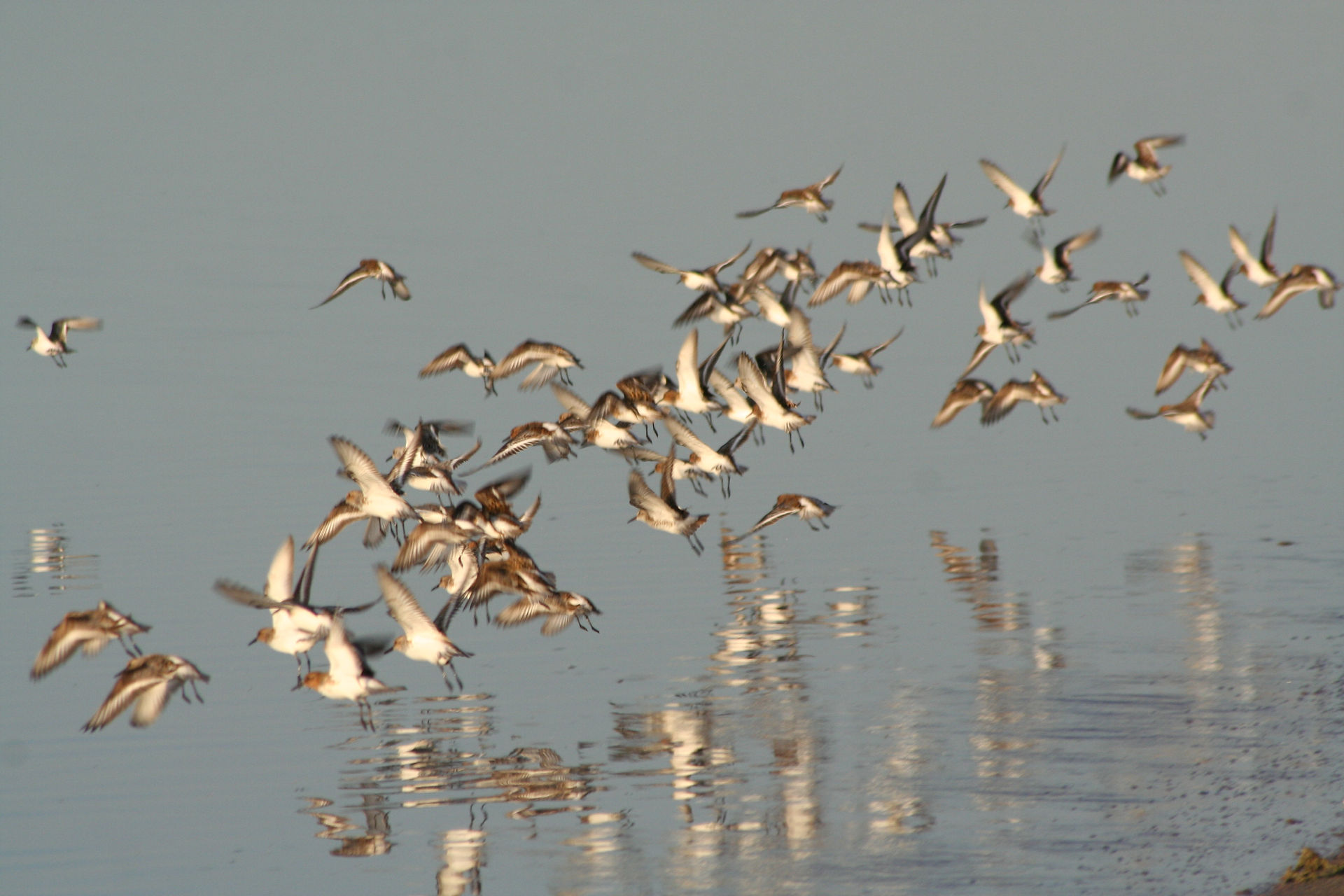

DR. CHRISTY MORRISSEY
Threats to migratory shorebirds at stopover sites in the Central Flyway
Shorebirds are known for their impressive long-distance flights. They migrate from winter grounds in the United States, Central, and South America to their breeding areas in the northern latitudes. During the annual cycle, they face numerous potential risks. We are interested in understanding whether environmental contaminants such as PAHs and other dioxin-like compounds may be playing a role in declines of migrant shorebirds, particularly in the more poorly studied Central Flyway. Other threats such as wind energy development (windfarms) are of additional interest at Chaplin and Reed Lake, Saskatchewan.
Migratory shorebird populations have declined by almost half since 1970, experiencing some of the most substantial declines of any guild. Among threats affecting their survival, environmental pollution may be playing an important role since large numbers of birds aggregate in focal wintering and stopover sites along the migratory path. The large number of potential wintering areas, variation in pollution levels and the lack of information about shorebird migration ecology and connectivity make it difficult to establish where and when problems are occurring.
Due to the environmental persistence and toxicity, we have research projects which aim to
1) understand the extent to which shorebirds are exposed to polycyclic aromatic hydrocarbons (PAH), polychlorinated biphenyls (PCBs), and dioxins across their range in North and South America
2) evaluate the toxicity to Sanderlings, a model long distance migratory shorebird, and other bird models in vitro and in vivo
3) evaluate fuelling ability and stopover timing in relation to contaminant levels at stopover sites
4) assess potential risks of windfarm turbines to migrating shorebirds during northward and southward migration at Chaplin Lake, SK.




We are broadly motivated by the conservation concerns of many Calidris shorebirds particularly at important stopover sites in the Central Flywy. Some of our fundamental work has involved developing a Citizen Science Annual survey and spring banding work at Chaplin Lake, Saskatchewan - a recognized WHSRN site. This is Imporant for improving the understanding of shorebird ecology, migration and use of important stopover habitats in the Gulf of Mexico and Central Saskatchewan.